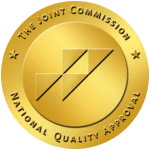6 Standard Roles in an Addicted Family

With over 24 million people addicted to drugs or alcohol in the United States, a surprisingly large number of families are home to addicts. Having an addict in the family, no matter their role, has a significant impact on the health, structure, and hierarchy of that family. Close-knit families often suffer the worst, especially if a matriarch or patriarch becomes addicted. An addict is unable to take care of themselves, their family, or their responsibilities, resulting in a natural shift in hierarchy and power which typically harms every member of the family as everyone resettles around the addict and takes on new roles.
Because addictions create dysfunctional families, many households with an addicted member fall into standard dysfunctional family roles. In non-addicted families, there are often the Good or Hero, the Problem or Scapegoat, the Caretaker, the Lost Child, the Mascot or Family Clown, and the Mastermind or Opportunist. In the case of addictions, two of these roles are typically changed, with the Mastermind being the addict and the caretaker being the enabler.
The Addicted
The addicted person is the first and most important change in any family role. This person is struggling with substance abuse, which may be alcohol, prescription medication, or illegal drugs. In most cases, this person begins to use to cope with stress, emotions, or pain, which is a form of ‘self-medicating’. They use a substance to cope with problems, but as tolerance grows, need more and more of it to achieve the same effects. Eventually they become dependent and begin to develop maladaptive substance use patterns. This can lead to changes in personality, neglecting responsibilities, lying and manipulating, stealing, reckless behavior, self-isolation, anger, and other negative reactions.
The addicted person or persons (there can be more than one of each role in any given family) negatively impacts the rest of the family in every way. However, their impact on the family structure heavily depends on their own role. For example, a caretaker or provider becoming addicted could devastate a family. A child or dependent would cause problems, but nothing so severe.
The Enabler
The enabler takes on the role of the caretaker, either denying the addicts problems, denying the extent of their problems, or lying to themselves with the idea that the person will get better with enough care. Enablers can be spouses, partners, parents, or even children, who either work to convince themselves that the substance abuse is not a problem, or continue to take care of the addicted person, enabling them to continue their substance abuse.
This role changes a great deal depending on the person addicted and the person in the enabling role. For example, a parent or caretaker may become codependent, becoming as reliant on caring for the person as the addict is on their care. Here, the enabler physically enables the addict to continue their addiction by taking care of them, paying their bills or rent, cooking food, lying to friends and family, and otherwise taking steps to hide their addiction from everyone else.
In other cases, enablers can be subtler, but still harmful. A child or stay at home parent can deny that the addiction is a problem, even convincing the addict themselves.
The Scapegoat

The scapegoat is often blamed for problems, constantly in trouble, and is often heavily influenced to rebel by the dysfunctional family. In many cases, the scapegoat is used by the addict as someone to blame. Scapegoats can include one or more children, a spouse, a close family member, or anyone else in the family who is frequently a part of it.
For example, if someone in the house frequently says things that are blaming another person for their addiction, that person is likely the scapegoat.
- “I wouldn’t drink if Tom didn’t …”
- “I’ll stop using when Christie learns to control herself”
- “You’re driving me to shoot up. Every time you nag I can’t help it”
- “If you wouldn’t yell so much”
- “Why can’t you just be like you were before”
While it is most often the addict who uses this kind of blame to push their problems off on someone else, this kind of behavior can spread through the family, especially if multiple other people are enablers. Scapegoats can also be quite problematic on their own, and may be rebellious, runaways, highly promiscuous, or even substance abusers themselves as they get older.
The Hero
The Hero can overlap with other roles, but is especially common in children. This person is hardworking and overachieving, and may step up to earn more money, take care of at-home responsibilities, or even help care for siblings when parents or a family member are unable or unwilling. This person fights to bring the family together and create a sense of normalcy.
Again, this role can vary a great deal depending on the family dynamics. A provider may step up to take on household responsibilities and childcare in addition to their job. A homemaker may step up to get a part time job in addition to home responsibilities. An oldest child may work to take care of other children. In every case, the Hero strives to be the good guy, taking care of everyone, always doing the right thing, and somehow ‘rising above’ the dysfunction in the family – for example, to avoid punishment or criticism from a substance using parent, often with the intent of pretending that everything is okay.
Mascot
The Mascot or Family Clown is a frequently recurring role, but not present in every family. Here, the funny person in the family attempts to deflect from the actual problems by being funny or humorous. They use comic relief to pretend that everything is okay, to ease through situations, and to create a sense of normalcy – in much the same way as the Hero doing the same by trying to make everything okay. Because this role is often taken on by either very young children or emotionally fragile members of the family, it can induce very high levels of stress in the mascot.
Lost Child
Lost children are typically shy, withdrawn, and tend to hide rather than face confrontations or anger. This person is often invisible, hiding or avoiding attention, avoiding the spotlight, avoiding relationships, and often spending time alone as a means of coping.
While most frequently seen in children, the Lost Child can also be a spouse, especially next to a very loud and possibly abusive or dominant substance abuser.
Getting Help
Substance abuse affects the family as a whole, and as families fall more and more into dysfunctional family roles, they need help to become healthy themselves. A substance abuser in the family will negatively impact the psychological health of every family member, especially when the abuser is in a caretaker or providing role.
Getting help often means seeking family therapy or counseling, which will work to address the problems caused by the substance abuse, the change in family hierarchy, and the relationships inside of the family. This can be the only way to rebuild bonds and heal trauma from substance abuse, which will allow the family to reform into a healthy whole.
If you or a loved one is suffering from an addiction, seek help. Beginnings Treatment Centers offers addiction treatment programs that can help you or your loved one recover while healing the damage done to your family. Call us today and speak with one of our experienced and professional intake advisors. We are located in beautiful and sunny Southern California in Orange County, which has one of the strongest and most active recovery communities in the United States.

